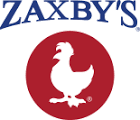Cracking Tough Brand Strategy Nuts.
Every once in a while I am asked to work on a tough piece of business. Cracking a tough piece of brand strategy code. Businesses with complicated targeting, multiple value propositions, never-been-done-before product or service make ups. This is my sweet spot.
The toughest part of brand strategy is what I call the Boil Down. Taking all that is discovered (the care-abouts and good ats) and reducing it to a more manageable level. Sometimes, before I can do that I just need to go back at my client stakeholders. One tool I developed as a waypoint in the process is The 7 Conundrums.
Before I’m comfortable writing the brand brief I create a presentation identifying behavioral or product observations that seem contradictory. Conundrums are tension points that when discussed with stakeholders and subject matter experts can reveal important insights. And/or also may move stakeholders closer to accepting possible brand strategies.
For an online art gallery marketplace client, here was a conundrum:
Walking into an art gallery can be intimidating but also freeing.
I’ve always found that fertile discussions about marketing and branding tension points get me closer to cracking the toughest nuts.
Peace.



